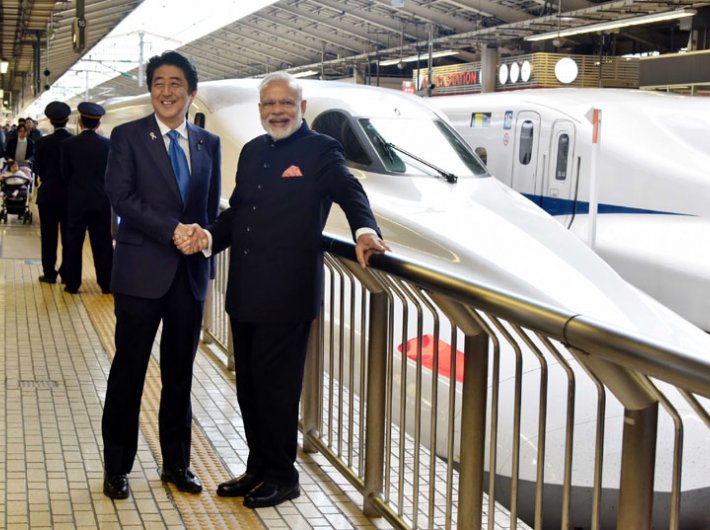Some believe railways face a host of challenges for the bullet train project whose deadline has been advanced by a year
Will you be able to take a bullet train in 2022? New railway minister Piyush Goyal is confident that the new deadline will be met, but experts are not so sure.
The national high speed rail corporation limited (NHSRCL) under the aegis of Indian Railways is executing the 508 km-long Mumbai- Ahmedabad high speed rail (MAHSR) project.
The Mumbai-Ahmedabad bullet train would be executed at an estimated cost of Rs 110,000 crore. Japan is giving a loan of Rs 88,000 crore at an interest rate of 0.1 percent which is to be repaid to Japan in 50 years. The interest would be paid after 15 years of receiving the loan from Japan.
Experts have expressed concern whether the NHSRC would be able to meet the deadline despite Goyal’s confidence that the bullet train project will be commissioned by Augsut 15, 2022 against the earlier target of December 2023.
The high speed train (HSR), commonly referred to as bullet train, will between 250 kmph to 320 kmph. It would take two hours and seven minutes to reach from Ahmedabad to Mumbai vis-a-vis existing travel time of 7-8 hours.
Japanese prime minister Shinzo Abe arrived in India on a two-day visit during which the foundation stone for the bullet train project will be laid. Prime minister Narendra Modi received him.
If former railway officials are to be believed, Indian Railways would have to overcome a few challenges to launch the Mumbai- Ahmedabad bullet train one year before the deadline.
Experts cited land acquisition, construction of elevated stations and adoption of new technology as the major challenges in front of the NHSRC.
A former railway board member said that land acquisition is going to be a major challenge. He said there are intricacies involved in getting land.
“Acquisition of land is indeed a challenge. A high speed station will come up above the existing railway station, where a number of trains are already running underneath. This makes it difficult to execute the HSR project,” he said.
Constructing a layout at an elevated level at a station where there is already a lot of traffic is going to be technically very difficult, he stressed.
Getting new technology which India has never seen is one of the challenges. Whatever technology is there for rolling stock, it has to be modified for India because of climatic conditions as temperatures are high in the country, an official said.
Former member (traffic), railway board, VN Mathur, said China between 2004 and 2017 has already done 22,000 km of high speed lines and even Morocco is building HSR. “Though India is already delayed in introducing the HSR, it is the apt time to execute it but the authorities will have to execute it meticulously if they want to meet the deadline,” he said.
Mathur said since the Ahmedabad-Mumbai section has the greatest traffic demand.
“India has lagged behind for many years since lack of adoption of new technology in the railways. Technologies which have been discarded by many developed countries had been used by Indian Railways. Prime minister Narendra Modi always wanted to modernise Indian Railways,” Goyal said on September 11.
Salient features:
• In the first phase, the bullet train will cover 508 kilometre between Mumbai and Ahmedabad.
• There are 12 stations proposed between Mumbai and Ahmedabad - Mumbai, Thane, Virar, Boisar, Vapi, Bilimora, Surat, Bharuch, Vadodara, Anand, Ahmedabad and Sabarmati.
• The distance will be covered in 2 hours and 07 minutes by the HSR if it stops at four stations namely Ahmedabad, Vadodara, Surat and Mumbai.
• Of this route, 92 percent of the route will be elevated, 6 percent in tunnel and the rest two percent will be on the ground.

